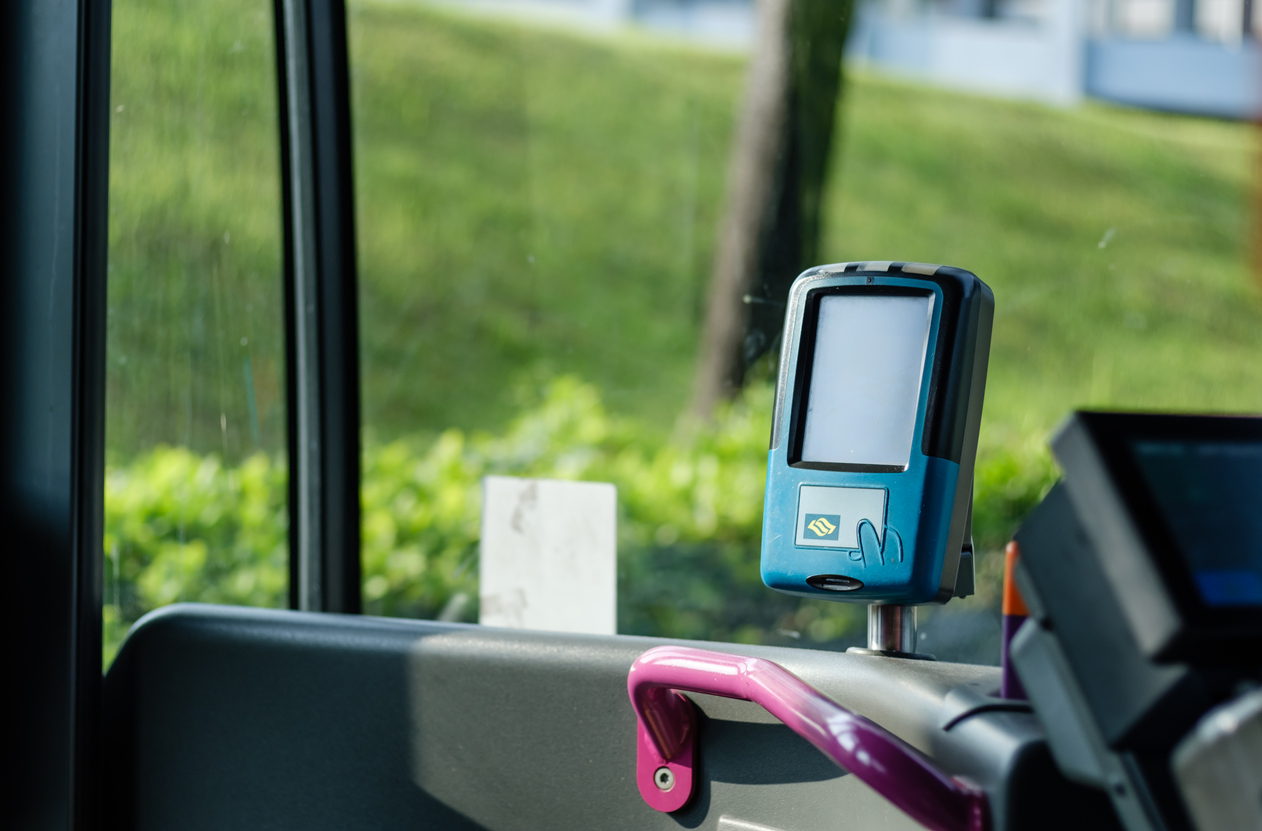Q&A with Juan Liverant at Payment In Motion
Payment In Motion (PIM) helps medium and small-town municipalities in North America to build modern contactless ticketing systems. It is committed to small and medium-sized transit agencies.
PIM provides turn-key solutions, from the Central Transit hosts to bus fareboxes, from inception to bus wiring and installation. PIM stands behind its previous projects, providing support and maintenance.
PIM delivered for Canadian cities, such as:
- St. John’s Transportation Commission (Metrobus), Newfoundland
- Newfoundland and Labrador- Guelph Transit, Ontario
- Grande Prairie Transit, Alberta
 Additionally, PIM’s management and staff have been involved in the design, development, and installation of Fare Collection projects in Canada since 2006, and in Latin America even before that. These projects include:
Additionally, PIM’s management and staff have been involved in the design, development, and installation of Fare Collection projects in Canada since 2006, and in Latin America even before that. These projects include:
- Lethbridge Transit (Canada), 2011
- Regina Transit, (Canada), 2010
- Saskatoon Transit (Canada), 2009
- Kingston Transit, (Canada), 2008
- Brantford Transit, (Canada), 2007
- Saltillo, Coahuila (Mexico), 2004
- Guadalajara Subway (Mexico), 2002
Payments Consulting Network Associate, Eugene Lishak, caught up with Juan Liverant, CEO, Payments In Motion, to discuss their projects and approach.
EL: Could you give us a typical example of your projects?
JL: Let me say a few words about St. John’s Transportation Commission (Metrobus)
Since December 2005, when the St. John’s Transportation Commission (Metrobus) in St. John’s, Newfoundland selected our team and staff to design and supply a contactless smartcard- based Automatic Fare Collection system, the first of its kind in Canada, PIM’s staff has worked hand- in-hand with Metrobus to keep the system at the leading edge of technology.
Through the years the system has grown in capabilities and new technologies have been incorporated.
A loyalty point system was introduced in the early 201O’s that allows passengers to accumulate Air Miles points when using the buses.
- In 2015 the GoBus units, which provide mobility services, were equipped with a handheld smart card reader to allow passengers to pay their fare with the same payment options offered in the conventional buses.
- In 2016 a new Validator, the Futura 3FB, was installed, replacing the original ones installed in 2006, something that was done over a weekend, again, without disrupting the operation of the system. The new Validators, with its larger screen, allowed Metrobus to start showing videos, either as paid advertisements, or promotional videos.
- Finally, in 2021 Metrobus awarded PIM the project to upgrade and update the entire ticketing system, moving it an ABT (Account-based ticketing) one, in which the transactions will be processed by the backend in real time, which gives the capability that the reloads done by the passengers are immediately available for usage.

EL: How are you able to compete with such whales as Cubic or Accenture?
JL: Our customers are medium and small cities. Some of them operate less than 85 buses. They have limited budgets and strong connections with their riders. I would say, the feedback loop for the municipal elected officials is short and merciful in small cities. They can afford only cost-efficient, full featured, fast-to-market, and working solutions.
EL: What is your typical solution delivery time?
JL: We usually can deliver a 100-bus project in less than 8 months.
EL: Are your systems closed-loop or open-loop?
JL: Before, we did only closed loop. Recently we have added open loop addressing the clients’ demands, but still providing a robust close-loop system.
EL: Why would small municipalities need an open-loop ticketing system?
JL: This is an interesting question. The knee-jerk answer is usually like this:
“We want visitors be able to use our transit system seamlessly”.
I often challenge such a business case. “Your city is not a tourist destination. You have a few visitors coming to your city for business purposes. Why would such a businessperson wait 40 min for a bus, in minus 40 Celsius frost when he or she can take a taxi for $15?”
On a serious note, the main drivers for open-loop in medium and small cities is the desire of providing a new alternative way of payment, and not fall behind technology-wise, but without understanding the implications in terms of costs related to the implementation.
EL: What is the main challenge on the open-loop way?
JL: The cost of acquiring system. You need to involve an acquiring processor who implements ever-changing card industry rules for processing of transit deferred contactless transaction aggregation, first ride cost recovery, etc. Plus, you have PCI DSS rules to comply with. Do not forget that now each bus validator becomes a PoS, and you need certified devices which you need to continually upgrade to be complaint with at least EMV, Visa, Mastercard, and Interac (in Canada) requirements.
EL: Can you give us examples of challenges that transit agencies have to deal with?
JL: Cash is still a legal tender in Canada. Some riders do not like that they are deprived of their rights to pay cash for their rides. Some municipalities got sued. As a result, some transit agencies install fareboxes and accept cash payments on the buses. Other agencies install $50,000 vending machines on every of their BRT bus stops, to pay and get a ticket, or to top-up closed-loop cards, with an option of cash payment.
Another challenge is addressing needs of people with disabilities. They must be able to pay for their rides at the validators too.
Author: Eugene Lishak, Associate, Toronto, Payments Consulting Network.
Eugene is a payments specialist with over 40 years of hands-on BSA and software development experience including over 30 years of Business Analysis in Payments and Fintech. Eugene assisted issuers and acquirers, processing centres, POS/ATM networks, and public transit fare collection systems.
***
If you found this article helpful and would be interested in reading similar articles by our consulting team, please subscribe to our newsletter.
Are you interested in reading articles on a particular payments topic, company, payments industry executive or author? Click the search icon, it’s that magnifying glass on the top right-hand side of the website, and type in the keywords that interest you. You will then be presented with a list of any articles that match your search criteria.




